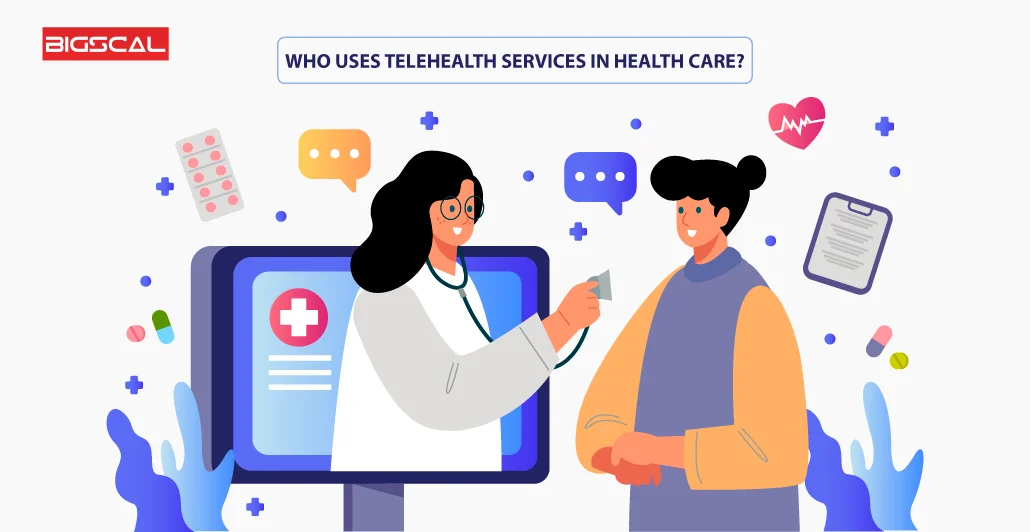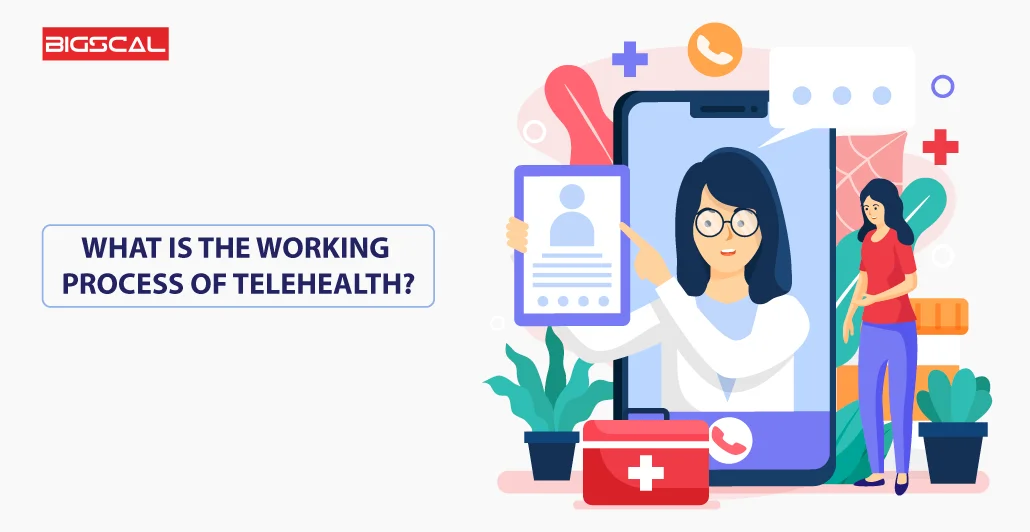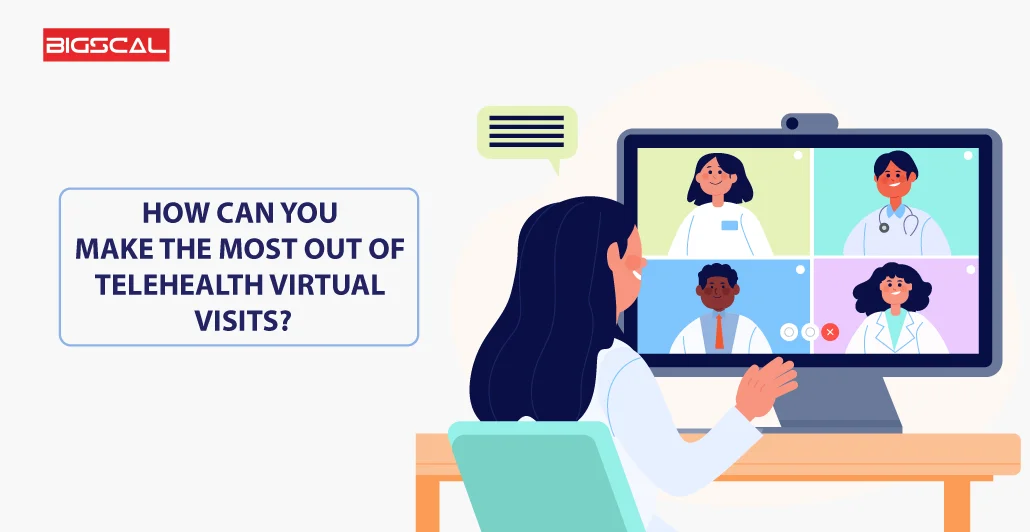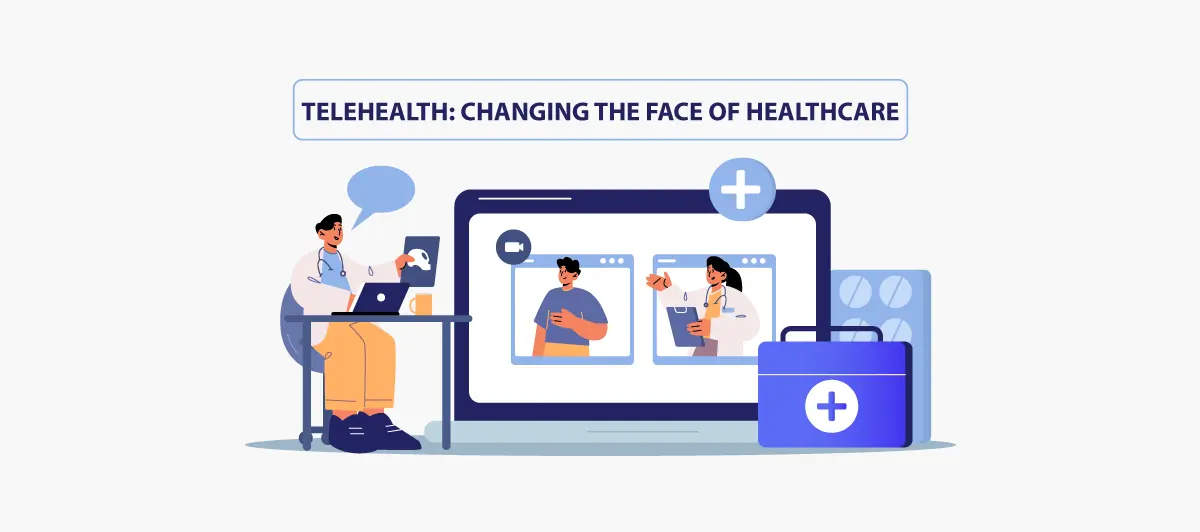How Does Telehealth Work? Technology Meets Health Care
Quick Summary: Curious to understand how does telehealth work? It blends technology and healthcare by allowing patients to access medical services remotely. Through secure video calls or messaging, doctors diagnose, prescribe, and offer guidance to patients, enhancing convenience and accessibility in healthcare delivery.
Introduction
Almost half of the doctors in the United States treat patients using Telemedicine services. But to your surprise, Telehealth isn’t a new thing. Primary health care providers and physicians have used it for a long time to offer phone consultations. But the pandemic era of social distancing has brought the usage of this technology to the forefront. Before the perfect vaccine or treatment plan was brought up, healthcare providers used it for virtual visits and treatment.
But how does telehealth work? Telehealth is known for delivering healthcare services and information through computer or electronic communication. As per standards, it is also an interaction among a healthcare provider, health care team, or patient. With telehealth services, people can manage their health with remote support.
Hence technology is one of the main aspects of delivering these services, but it is not confined to a single type. Technology can help provide medical and healthcare teams together at any distance. Moreover, the telehealth technology you choose will determine how the interaction will happen. Eager to know how Telemedicine works? Let’s get started.
What is Telehealth?

Telehealth is a much more straightforward term to understand than you think. Simply put, you can get an appointment with a doctor over various platforms rather than directly going to a doctor’s office. Hence you can consider it as a virtual visit to your healthcare provider.
It is not a technology that has recently evolved as previously many specialists used to provide consultations over call. But after the outbreak, many primary care providers started to offer online patient portals for consultations, prescriptions and appointments. It’s up to patients whether they want to opt for an appointment or go with a face to face meeting.
Telehealth is many times addressed as Telemedicine. But how does telehealth work? It lets healthcare providers view a patient’s personal information without an in-person visit. Telehealth appointments are majorly web-based and can be done through any device or computer with internet access.
Telemedicine virtual visit is an excellent alternative to traditional care. Here are some options and benefits you get to enjoy with virtual visits
- Contact a doctor or nurse practitioner using phone or video chat.
- You can easily exchange messages, files, or emails without visiting the provider’s office.
- Employ remote monitoring to ensure all vital parameters like blood pressure are alright.
- Many other telehealth options exist to access medical care in rural areas without transportation.
- One can quickly seek urgent care whenever needed through video visits to save a patient from ending up in the emergency ward.
How does telehealth work and who uses it in the health care sector?

If your health care provider allows you to use telemedicine services, you will just need a reliable internet connection and a device such as a phone. It is one of the most convenient tools for everyone. But it is majorly helpful for:
- People that live in rural areas that are away from doctor’s offices.
- Patients need urgent care but have limited time, transportation, or movement.
- A person that needs medical care for cases like skin conditions while away from home.
Read more: When Was Telemedicine Invented? History Of Telemedicine
What is the working process of Telehealth?

The medical services you can get from Telemedicine depend on your doctor and insurance company’s offering. interested to know how does telehealth work? Here’s how it does:
Online patient portal: Telehealth platform for patient primary is a portal where you can get secure access to personal health information through username and password. Hence through this portal, one can send or receive emails, ask for prescription refills, and arrange an appointment. Your doctor can also share your imaging reports or lab work. A person from a rural area can make the most out of this patient portal too.
Virtual appointments: Some physicians use Telemedicine to provide consultation over video conference or call. With its usage, you can easily make virtual visits, converse with office staff and seek treatments.
Read more: Most Demanding Clinical Data Management Software System For Upcoming Year
What preparations do you need to do before Telemedicine appointments?
By now you might have understood how telehealth works? Hence if you have minor issues like a slight increase in blood sugar levels, it can take a phone call to resolve the issue. But if you want a face-to-face meeting, you might need a smartphone or a computer with a webcam. According to the American telemedicine association, if you want the best experience, ensure your WIFI is working correctly. Experts say WIFI connectivity issues are a significant reason for the canceled appointment.
Just like you have a quiet and private space in a doctor’s office, sitting in a private spot at home is necessary. Hence providers suggest informing your other family member that you are unavailable at the appointment.
Before you start your virtual visits at m Health, check parameters like weight and temperature. It would help you answer the physician. Moreover, note all vital signs, the symptoms and their duration to make your diagnosis more accurate.
What happens during a telehealth appointment?
Generally, during the telehealth consultation process, doctors ask patients about their medical history and the symptoms that they are experiencing. Hence it will help them decide the ideal treatment time. You might send a picture for a physical exam if there is any visible condition. It will help physicians diagnose infectious diseases better and know whether they can be treated remotely.
If the doctor finds an in-person visit is necessary, you will be asked to visit the office. Hence a telemedicine appointment could help you save time. Some doctors might start the session by asking about the primary concern. Later they might conduct specific analyses to decide. Also, they can provide an online prescription and explain each product. And after the treatment, the healthcare provider will contact the patient to discuss financials and the next steps.
How can you make the most out of Telehealth virtual visits?

Use technology before the time
Telemedicine exists in various types. Hence before you start your virtual appointment with the health care provider yourself, conduct a trial. Moreover, ensure you understand the entire system and work on any faults. Download any necessary app, software, or program beforehand. Also, there are virtual waiting rooms or rooms to wait for your turn.
Being prepared
Before starting the appointment, make a list of symptoms and medicines that you are currently taking. Also, consider all the questions you want to ask the health care provider so you don’t miss anything.
Beef up your bandwidth
There might be many places at your home where Wi-Fi signals are weak or more robust. Problems like a frozen screen or slow connection could make appointments difficult. Hence make sure you are in an area with the most vital signals. Keeping phone calls as a backup plan can be good.
Prepare to punt
It would be best if you remembered you might have to go to visit a doctor’s office even after using telemedicine virtual visits. It might be troublesome, but it will be necessary in some instances.
Telehealth App Development Services at Bigscal
Bigscal’s Telehealth App Development Services lead the way in revolutionizing healthcare delivery. With a team of skilled developers and a commitment to innovation, we craft custom global telemedicine solutions tailored to your specific needs.
Our apps ensure seamless doctor-patient and provider interactions, secure data handling, and user-friendly interfaces. Bigscal’s telehealth apps integrate cutting-edge technologies like AI and IoT for remote doctor and patient monitoring, providing real-time health data to patients and physicians.
Our services extend to HIPAA compliance, guaranteeing data privacy and security. Whether you’re a hospital, clinic, insurance company, or healthcare startup, Bigscal empowers you to expand your reach, improve patient care, and stay at the forefront of the telehealth revolution.
Conclusion
In conclusion, the seamless integration of technology and healthcare through Telehealth has transformed how we access medical services. By now you might be aware of how does telehealth work? Telehealth operates as a lifeline, bridging the geographical and logistical gaps often hindering timely healthcare access. For example, by enabling remote consultations, diagnostics, and monitoring, it empowers patients to take charge of their well-being.
Furthermore, it eases the burden on overburdened healthcare systems, improving overall efficiency. However, as with any innovation, it demands vigilance in ensuring equitable access to health care and safeguarding patient data. Telehealth has undoubtedly redefined the healthcare landscape for many providers, offering convenience and accessibility, but its future success hinges on responsible implementation and continuous technological advancements.
FAQ
How does telehealth work?
Telehealth usage is straightforward. First, schedule an appointment with your healthcare provider or choose an on-demand service. Then, download the required app or access the platform provided. At your scheduled time, log in, and you’ll be connected with your healthcare professional for a virtual consultation.
How do I prepare for a telehealth visit?
Prepare for a telehealth visit by finding a quiet, well-lit space with a stable internet connection. Have your medical history and a list of current symptoms or questions handy. Ensure your device’s camera and microphone work. Be ready to discuss your health just as you would in person.
What to expect from Telehealth?
Expect convenient access to healthcare from the comfort of your home or location of choice. Telehealth consultations are similar to in-person doctor visits, where you’ll discuss symptoms, receive diagnoses, and get treatment recommendations. It’s a secure, efficient way to receive medical care.
How does the process work for Telemedicine?
Telemedicine involves a few simple steps. Schedule an appointment, log in to the telemedicine platform, and you’ll be connected with a healthcare provider via video call. They’ll assess your condition, provide guidance, and, if necessary, prescribe medication or recommend further action.
What happens during a telemedicine visit?
You’ll discuss your various health concerns with a healthcare professional via video call during a telemedicine visit. They’ll ask questions, examine symptoms, and provide recommendations. If needed, prescriptions can be sent directly to your pharmacy. It’s a convenient and effective way to receive medical care without leaving home.







